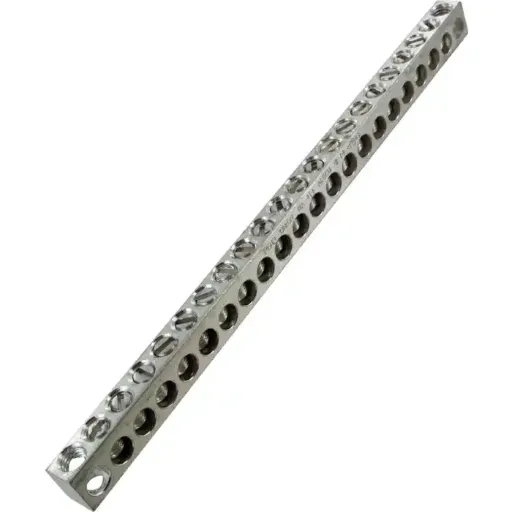Stainless steel is a multipurpose and essential material that has omnipresent applications in the modern industry and in everyday life. Its corrosion-resistant nature, durability, and strength find applications all over-an endless array ranging from construction and manufacturing to medical apparatus and kitchenware. Know the world of stainless steel in-depth as we discuss the types, grades, and crucial differences that separate stainless steel from carbon steel. By the time you finish reading, you will have acquired a deep knowledge of the differences between these materials, their distinguishing properties, and how best to apply your knowledge to select the proper type for a given application. The book is for industry professionals as well as the curious-giving you a background from which you can build the capacity to make informed decisions about steel selection.
Importance of Knowing Steel Types
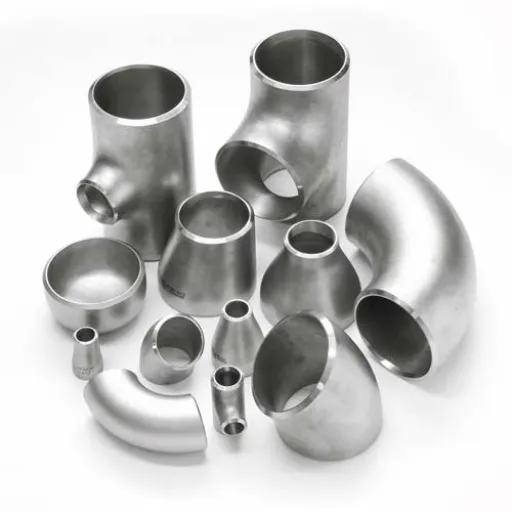
Knowing about the various types of steel and their properties is essential in choosing the right material for industrial and engineering uses. Steel types, in general, fall into categories: carbon steel, alloy steel, stainless steel, and tool steel, all with varying chemical compositions, mechanical properties, and uses. For instance, carbon steel, which offers very high strength at a low cost, is used in construction and automobile industries. Market reports show that it accounts for over 90% of global steel production due to its vast application.
Stainless steel, conversely, resists corrosion due to the chromium it carries, usually from 10.5 to 30%. These include varieties of austenitic, ferritic, and duplex stainless steels, each serving varying needs, with austenitic steel such as Grade 304 being the most common variety on account of its weldability and oxidation resistance. The duplex stainless steels, capable of combining high strength with corrosion resistance, are now being flocked, with recent data showing a projected CAGR exceeding 4% for the global duplex stainless steel market from 2023 to 2030.
The tool steel, on the other hand, which maintains a cutting edge, is used for making tools and dies. Tool steels like D2 and M2 are preferred for their hardness and abrasion resistance. It is projected that, due to rising demand from automotive and aerospace sectors, the global tool steel market will witness steady growth.
Types of Stainless Steel
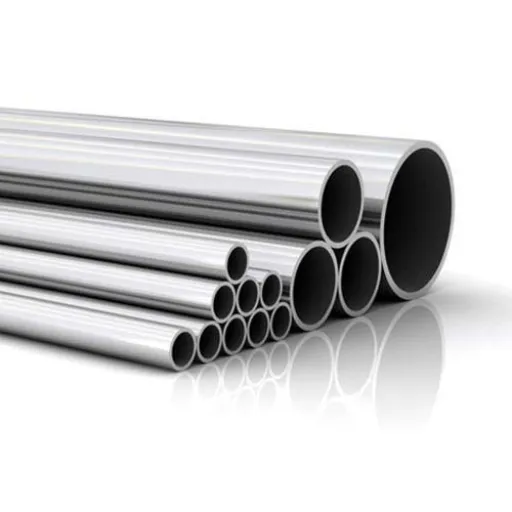
Austenitic Stainless Steel
The main characteristic of an austenitic stainless steel is its face-centered cubic (FCC) crystal structure, which remains stable at all temperatures; hence the steel has excellent formability and weldability. These steels are alloyed chiefly with chromium (16-26%), nickel (6-22%), and other elements like molybdenum, manganese, and nitrogen to work on their corrosion resistance and mechanical properties.
This group includes some important grades: 304 and 316 stainless steel. The 304 grade stainless steel is most widely used and endowed with good corrosion property in mild environments, and it finds applications in almost all industrial sectors. 316 stainless steel, on the other hand, is used for harsher environments and contains 2 to 3% molybdenum to very strongly resist pitting and crevice corrosion that is mainly caused by chloride media, for instance, seawater or chemical plants.
• Tensile strength: 515 to 827 MPa (75,000 to 120,000 psi)
• Temperature range: Cryogenic to over 1500°F (815°C)
• Applications: Aerospace, food processing, medical devices, and construction
Martensitic Stainless Steels
Martensitic stainless steels represent a class of steel alloys characterized by stronger wear resistance, moderate corrosion resistance, and resistance to cracking. These alloys are usually made up of 12 to 18% chromium, 0.1 to 1.2% carbon, and minor amounts of nickel or other elements depending on the grade. Martensitic stainless steels are distinguished by their ability to be hardened by heat treatment, which yields a martensitic microstructure. They thus find use in many applications where durability and mechanical performance are required.
Type 410
- 12% chromium, 0.1% carbon
- Used for turbine blades, surgical instruments, cutlery
Type 420
- Higher carbon content
- Used for tools and blades
• Reduced corrosion resistance compared to austenitic and ferritic stainless steels
• High carbon content impedes ductility
• Reduced usability where severe deformation or flexibility is required
Grade 414 Stainless Steel
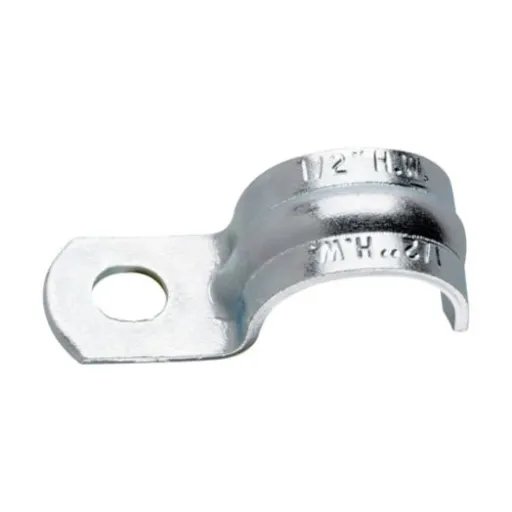
Featured Grade Spotlight
Grade 414 stainless steel falls into the category of martensitic steels endowed with unbeatable strength and resistance to wear. I find it to be preferred mostly for applications where the material requirements entail tensile strength to a reasonably high degree and some corrosion resistance under conditions of mechanical stress or abrasive atmospheres.
Composition & Properties of Grade 414 Stainless Steel
Grade 414 stainless steel is a martensitic grade, possessing high strength, hardness, and moderate corrosion resistance, which facilitates its use in many industrial applications. Its chemical composition normally includes 11.5-13.5% Cr (chromium), which forms a passive oxide layer that inhibits corrosion, and 0.95-1.2%C (carbon), which improves hardness and tensile strength by heat treatment. More elements such as manganese, up to 1%, and silicon, up to 1%, traces of sulfur, offer the best performance profile.
| Property | Value/Range |
|---|---|
| Tensile Strength | 650-850 MPa |
| Hardness | 240-320 HB |
| Elongation | ~15% in tensile testing |
| Chromium Content | 11.5-13.5% |
| Carbon Content | 0.95-1.2% |
Thermo-mechanical processing profoundly affects the mechanical characteristics of Grade-414 steel. Properly hardened and tempered, it has a tensile strength in the range of 650-850 MPa and a hardness from 240 to 320 HB, good enough to resist abrasive wear under heavy load. The material also shows moderate flexibility, with almost 15% elongation in tensile testing, which suffices in many applications requiring the ability to carry a load.
The corrosion resistance of Grade 414 stainless steel is moderate, being poor against harsh, corrosive environments, and better in atmospheres of mild acids or alkalies; further additions of optional elements, such as molybdenum, will improve corrosion resistance to chloride environments, making it candidate materials for marine or chemical industries. From another side, because of its high carbon content, it may be predisposed to pitting in aggressive environments if not properly maintained.
The common applications for 414 Grade stainless steel are turbine blades, cutlery, valve components, and surgical instruments where such stainless steel goes unmatched as the very best among stainless steel grades in terms of balance between strength and wear resistance. This Grade 414, sinewy with constant research and alloy improvement, will never wane in indispensable industries requiring tough materials for reliable use.
High Strength and Hardness Properties
• Tensile strength: 655-965 MPa (megapascals)
• Yield strength: 415-655 MPa
• Maximum hardness: 40 HRC (Rockwell Hardness C scale)
The extraordinary high strength and hardness values characteristic of Grade 414 stainless steel work equally well to ensure the maximum breadth of applications in various hostile environments. Its tensile strength varies between 655 and 965 MPa (megapascals), and the yield strength lies between 415 and 655 MPa, depending upon the heat-treatment conditions. Such a high-strength-to-weight ratio assures that Grade 414 finds applications in any structural part that has to undergo deformation under load to some extent.
The alloy also has good resistance to wear, the maximum value being around 40 on the Rockwell Hardness C scale (40 HRC), after proper heat treatment of course. It gives Grade 414 that much-needed wear resistance for use in components and systems such as bearings, cutting tools, and hydraulics. The ability of the alloy to retain strength at elevated temperatures aids in its performance in high-stress environments such as gas turbines and petrochemical refining plants.
To reach ideal mechanical properties, the heat treatment of annealing, quenching, and tempering is applied to Grade 414. These processes control the resulting microstructure with precision, allowing it to be treated as a tool with which one can “dial-in” strength and hardness according to the need of the application. This versatility, coupled with the rapid growth of metallurgical technology, will keep the Grade 414 on top as an industrial or engineering material that sees harmonious synergy within a set of toughness and assured hardiness.
Common Applications of Grade 414 Stainless Steel
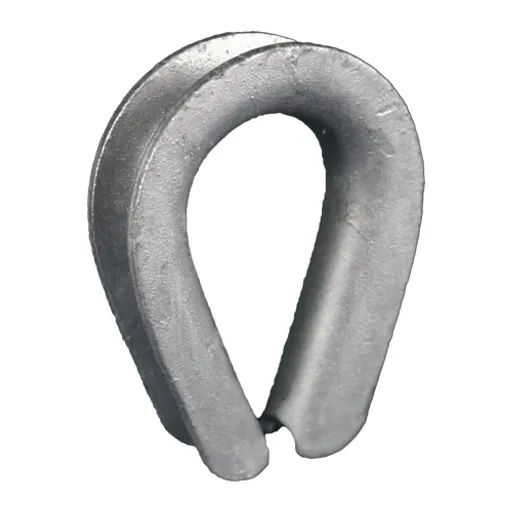
Grade 414 stainless steel finds common applications in aerospace components, automotive parts, industrial machinery, and civil engineering. It bridges the best balance of strength, toughness, and corrosion resistance, making it suitable for environments that demand high durability and high performance.
Use in the Aerospace Industry
In the aerospace industry, Grade 414 stainless steel is put to use where there is precious little strength-to-weight ratio, weldability, stress corrosion cracking resistance, heat resistance, and stress corrosion cracking resistance of exquisite performance. Hence, this Grade takes first preference for components landing gear assembly, airframe structural components, and engine components.
Temperature Resistance
Operating temperatures up to 1200°F (649°C) without serious deterioration of mechanical properties
Strength Range
Can be tempered to tensile strengths from 80,000 PSI to 130,000 PSI
Compliance
Meets exacting demand specifications set by FAA and EASA standards
One of the substantial attributes of this Grade 414 is superior fatigue resistance needed in aerospace applications for which components are subjected to cycles of stress repetitively; industry sources suggest that stainless steel grades such as 414 may be used at operating temperatures of up to about 1200°F (649°C) without serious deterioration of the mechanical properties, thereby being well-suited for high thermal-stress applications.
On the other hand, it can be machined readily and heat treated to give precisely the properties required for particular aero-engineering applications. For example, Grade 414 can be tempered to tensile strengths of from 80,000 PSI to 130,000 PSI. This, therefore, enables it to satisfy the exacting demand specifications that are set by relevant aviation authorities including FAA and EASA standards.
Corrosion resistance to atmospheric and marine environments is yet another feature that ranks it as a desirable choice in aerospace applications where exposure from an environmental standpoint is severe, and its durability combined with ability to take on various environmental conditions ensures longevity through extended flight cycles where performance and safety are well upheld under extremely hostile conditions in either high altitude or aggressive weather situations.
Applications in Heavy Machinery
In heavy machinery, 414 is preferred because of its exceptional mechanical properties and resistance to wear. Its high tensile strength and toughness enable it to withstand the intense mechanical stress imposed upon components such as drive shafts, hydraulic guns, and load-bearing structures. This alloy is particularly useful in mining equipment subjected to abrasive conditions and industrial equipment used in long hours of service.
Performance Benefits
- Fatigue Resistance: Maintains performance under pressure cycling
- Surface Durability: Resists pitting and cracking in dynamic loading environments
- Machinability: Highly machinable, reducing lead times and supply chain pressure
- Longevity: Components last up to 30% longer than conventional steel alloys
Recent findings state that Grade 414 maintains resistance to fatigue and surface degradation occurring in high-pressure and dynamic loading environments. For example, in maintaining hydraulic cylinders for earthmoving equipment, Grade 414 manifests increased performance efficiency, resisting pitting, and cracking under pressure cycling. Machine component producers appreciate it as highly machinable and thus able to cut down their lead times considerably, thereby easing supply chain pressure.
Grade 414 is also put to good use in agricultural machinery, ensuring the strength of critical components such as gears, axles, and cutting blades. It withstands the kind of vibration and impact present in these environments, thus enabling the application to operate reliably in harvesters and tractors in various terrains and weather conditions. There is an indication that components of heavy machinery made from Grade 414 can last in service up to 30% longer than those using conventional steel alloys, reducing costs for maintenance and increasing availability of machines in different sectors.
Advantages of Grade 414 Over Other Stainless Steel Grades
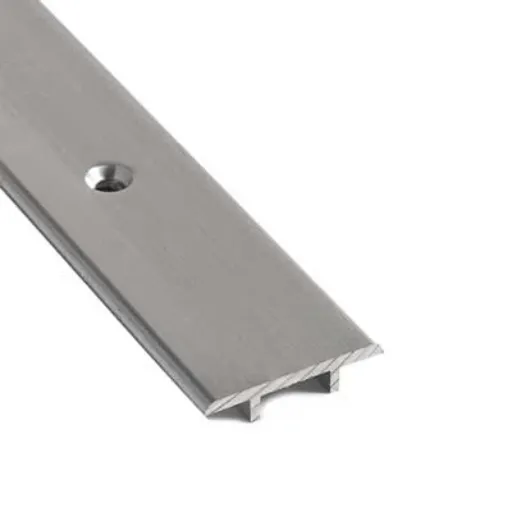
The 414 grade is distinguished by greater strength and its ability to resist high-stress load conditions as compared to the normal stainless steel grades. The exceptional wear, abrasion, and fatigue resistances make it apt for heavy-duty applications, unlike many of the common alloys. The chromium present substantially improves corrosion resistance, hence extending the life of components, which diminishes the maintenance needs to some extent. These advantages make for a more durable and less expensive option for harsh service conditions.
Comparative Strength and Hardness of Grade 414
Performance Comparison
| Grade | Tensile Strength | Hardness (HRC) |
|---|---|---|
| Grade 414 | 655-1000 MPa | 35-44 HRC |
| Grade 304 | 515-827 MPa | <30 HRC |
| Grade 316 | 515-827 MPa | <30 HRC |
Increased tensile strength and hardness make Grade 414 stainless steel the material of choice in several high-performance applications. The tensile strength of the alloy can typically vary between 655 MPa and 1000 MPa after heat treatment, depending on the exact process used. Its hardness can reach between 35 and 44 HRC, depending on the treatment given to the members of this grade, thus outclassing many accepted grades of stainless steel like 304 and 316, which rarely measure more than 30 HRC on the same scale.
While it has stronger mechanical properties than alternative stainless steels owing to its high chromium (12-14%) and molybdenum (0.5-1%) contents, this further strengthens 414 grade steel in wear and corrosion resistance under harsh environmental conditions. For example, in an environment subjected to abrasion, it is evident from tests that the surface hardness effect of 414 Grade allows it to be operational up to 40% longer than the softer grades such as 316L, thereby reducing downtime and the costs of replacement.
Its hardness and strength also manage to put Grade 414 on the list of better materials for components exposed to cyclical loading stresses such as gears and shafts. Recent comparative studies highlight that parts from Grade 414 could withstand fatigue stress cycles about 50 percent longer before failure than 304 or 316 varieties, ranking it as a key material for areas where reliability under mechanical pressure is critical, including construction, automotive, and aerospace.
Resistance to Corrosion
Grade 414 steel is one of the most corrosion-resistant ordinary steels. This resistance is afforded to them by their specific constituents, mainly chromium and molybdenum, which form an oxide passive layer on the surface when exposed to oxygen, thereby preventing further corrosion. Recent studies reveal that a chromium content above 12% allows for the formation of such a film that considerably improves the steel’s resistance to pitting and crevice corrosion when exposed to moisture or aggressive chemicals.
Marine Applications
Noticeable decrement of corrosion rates in saline water compared to usual low-alloy steels
Temperature Stability
Resistance to oxidation and scaling up to 1200°F (649°C)
Industrial Use
Suitable for chemical plants, oil refineries, and energy sectors
In marine situations where long-term exposure to saline water takes place, there is a noticeable decrement of corrosion rates in comparison to usual low-alloy steels. It has been felt that molybdenum enhances this resistance by decreasing the vulnerability to chloride-induced corrosion-a major problem in coastal and industrialized regions.
Moreover, the resistance of the steel to oxidation and scaling up to temperatures touching 1200°F (649°C) confirms the high-temperature suitability of this material. The thermal stability is coupled with mechanical properties, thus, putting it into wide service in chemical plants, oil refineries, and even the energy sectors, where harsh conditions are by choice or by force inevitable. Thus, for an industry that seeks a viable engineer-designed material for the task, Grade 414 offers an excellent compromise between performance and longevity, verifying itself as a definite preference.
Reference Sources
-
SteelPro Group
SteelPro Group’s guide on Grade 414 stainless steel offers detailed insights into its properties, applications, and benefits, particularly for demanding industries like aerospace and heavy machinery. -
AZoM (The A to Z of Materials)
AZoM’s article on Grade 414 stainless steel provides an in-depth overview of its chemical composition, mechanical properties, and corrosion resistance. -
Ambica Steels
Ambica Steels’ overview of Grade 414 stainless steel highlights its versatility and applications across industries, from kitchenware to nuclear power reactors.
Frequently Asked Questions (FAQs)
How does grade 430 stainless steel resist corrosion?
Grade 430 stainless steel is a ferritic stainless steel with moderate corrosion resistance and suited to mildly corrosive environments. However, it is not ideal for highly corrosive applications, particularly in marine or chemical processing applications, where superior corrosion-resistant grades like 316 and 317 are usually considered.
What products and processes involve stainless steel grades 316 and 317?
Because of their corrosion and oxidation resistance, grades 316 and 317 stainless steel are used extensively in chemical processing equipment. They are especially resistant to chloride-containing environments, whereby they are employed in marine applications and for the pulp and paper industries.
What are the characteristics of grade 321 stainless steel that offer oxidation resistance?
Grade 321 stainless steel is endowed with excellent oxidation resistance owing to the presence of titanium, which stabilizes the structure against carbide precipitation during high-temperature exposures. In view of this feature, it finds frequent application in aerospace and oil and gas industries, where exposure to high temperature is almost inevitable.
How does carbon content relate to martensitic stainless steels?
Carbon content is important in martensitic stainless steels, between grades 410 and 440 largely feel the variance—where it effects hardness and strength. The higher will generally be the hardness, etc., and hence the steel will be suitable for applications that require that type of strength, whereas the low carbon variation gives better weldability along with a good balance of hardness and ductility.
What kind of stainless steel is utilized in exhaust systems?
Grades like 409 and 439 of stainless steels are used for exhaust systems. These ferritic stainless steels offer an acceptable level of corrosion resistance at elevated temperatures and provide a good-value solution to automotive applications, especially where corrosive exhaust gases are encountered.
How do precipitation hardening stainless steels differ from other types?
Precipitation hardening stainless steels resisted by 17-4 and other grades are wrought steels that uniquely can be strengthened by heat treatment to develop excellent mechanical properties for high-strength applications in aerospace and oil and gas industries.
Conclusion
Understanding the different types of stainless steel and their specific properties is crucial for making informed material selection decisions. Grade 414 stainless steel stands out as an exceptional choice for applications requiring high strength, durability, and moderate corrosion resistance, making it invaluable across aerospace, heavy machinery, and industrial applications.

